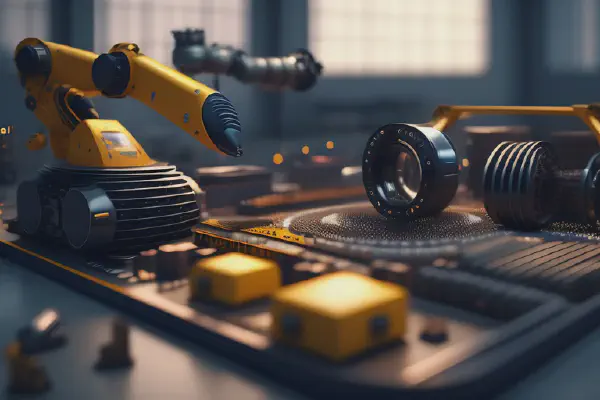
In an era where robotics and automation are making great strides, the ability for machines to navigate complex environments safely is crucial. Whether it’s autonomous vehicles on the road, drones in the sky, or robots in manufacturing facilities, the capability to detect and avoid obstacles in real-time is paramount.
In this blog, we will explore the fascinating world of obstacle avoidance through image processing, with a special focus on using OpenCV to make dynamic decisions to change a robot’s path or speed to prevent collisions.
The Importance of Obstacle Avoidance
Obstacle avoidance is a fundamental component of autonomous systems, ensuring that robots can safely navigate through dynamic environments. The applications are numerous, from self-driving cars dodging pedestrians and other vehicles to drones avoiding trees and buildings during flight. Industrial robots need to navigate crowded factory floors without causing accidents, while vacuum-cleaning robots must negotiate furniture and clutter in homes. The ability to detect and respond to obstacles in real-time is a critical aspect of their functionality.
Real-time Obstacle Avoidance with OpenCV
OpenCV, or Open Source Computer Vision Library, is a versatile and powerful tool that provides a wide range of functions for image processing and computer vision tasks. Its ability to work with images, videos, and depth maps makes it an ideal choice for implementing real-time obstacle avoidance.
Here’s how OpenCV contributes to the process:
- Image Processing
- OpenCV allows robots to capture and process images from cameras or other sensors in real-time. This enables them to identify obstacles, calculate their size and position, and make decisions based on this information.
- Object Detection
- Through techniques like object detection using deep learning models, OpenCV can identify specific objects, such as pedestrians, other vehicles, or obstacles in the robot’s path.
- Depth Maps
- For more advanced obstacle avoidance, depth maps generated by depth-sensing cameras or LiDAR sensors provide valuable information about the distances between the robot and surrounding objects. OpenCV can process these depth maps to determine safe paths.
- Path Planning
- Once obstacles are detected, OpenCV can assist in dynamic path planning. This involves calculating a new trajectory or adjusting the robot’s speed to avoid collisions while reaching the desired destination.
Challenges and Solutions
Real-time obstacle avoidance is not without its challenges. Lighting conditions, object size and shape, environmental changes, and sensor accuracy can all impact the effectiveness of obstacle detection. However, OpenCV’s adaptability and the continuous advancements in computer vision technology provide solutions to these challenges.
- Lighting Conditions
- OpenCV can employ various image enhancement techniques to adapt to changing lighting conditions, ensuring reliable obstacle detection.
- Object Variability
- Deep learning models trained on diverse datasets can recognize a wide range of objects, even those with variations in shape and size.
- Environmental Changes
- OpenCV can continually analyze and adapt to environmental changes, such as moving objects or shifting obstacles, in real-time.
- Sensor Accuracy
- Integrating multiple sensors, such as cameras, LiDAR, and IMUs, can enhance the accuracy of obstacle detection and avoidance.
Conclusion
Obstacle avoidance through real-time image processing is a critical component of autonomous systems, enabling robots to navigate complex and dynamic environments safely. OpenCV’s capabilities in image processing and computer vision make it a powerful tool for implementing obstacle avoidance systems.
As technology continues to advance, the applications for real-time obstacle avoidance are expanding, from autonomous vehicles and drones to robots in a multitude of industries. The ability to detect and respond to obstacles in real-time not only enhances safety but also unlocks new possibilities for automation and autonomy in various domains. OpenCV plays a significant role in making these possibilities a reality, and its continued development promises an even brighter future for real-time obstacle avoidance.